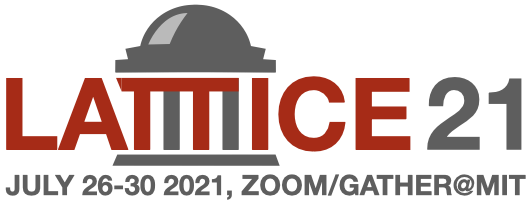Speaker
Description
Strong interactions produce a rich spectrum of resonances which decay into three or more hadrons. Understanding their phenomenology requires a theoretical framework to extract parameters from experimental data and lattice QCD simulations of hadron scattering. Two classes of relativistic three-body approaches are currently being pursued: the EFT-based and unitarity-based one. We consider a model of relativistic three-body scattering with an $S$-wave bound state in the two-body sub-channel using both formalisms. We present and discuss numerical solutions for the multi-hadron scattering amplitudes in different kinematical regions, obtained from integral equations of the EFT-based approach. We present the connection of our work to the ongoing program of computing three-body spectrum from the lattice. We also show how to generalize the unitarity-based framework to include all relevant open channels, discuss the nonphysical singularities near the physical region, and show how to eliminate them in a simple case.
